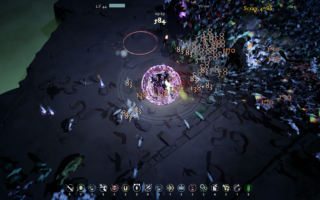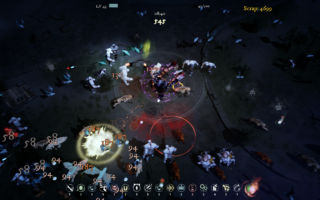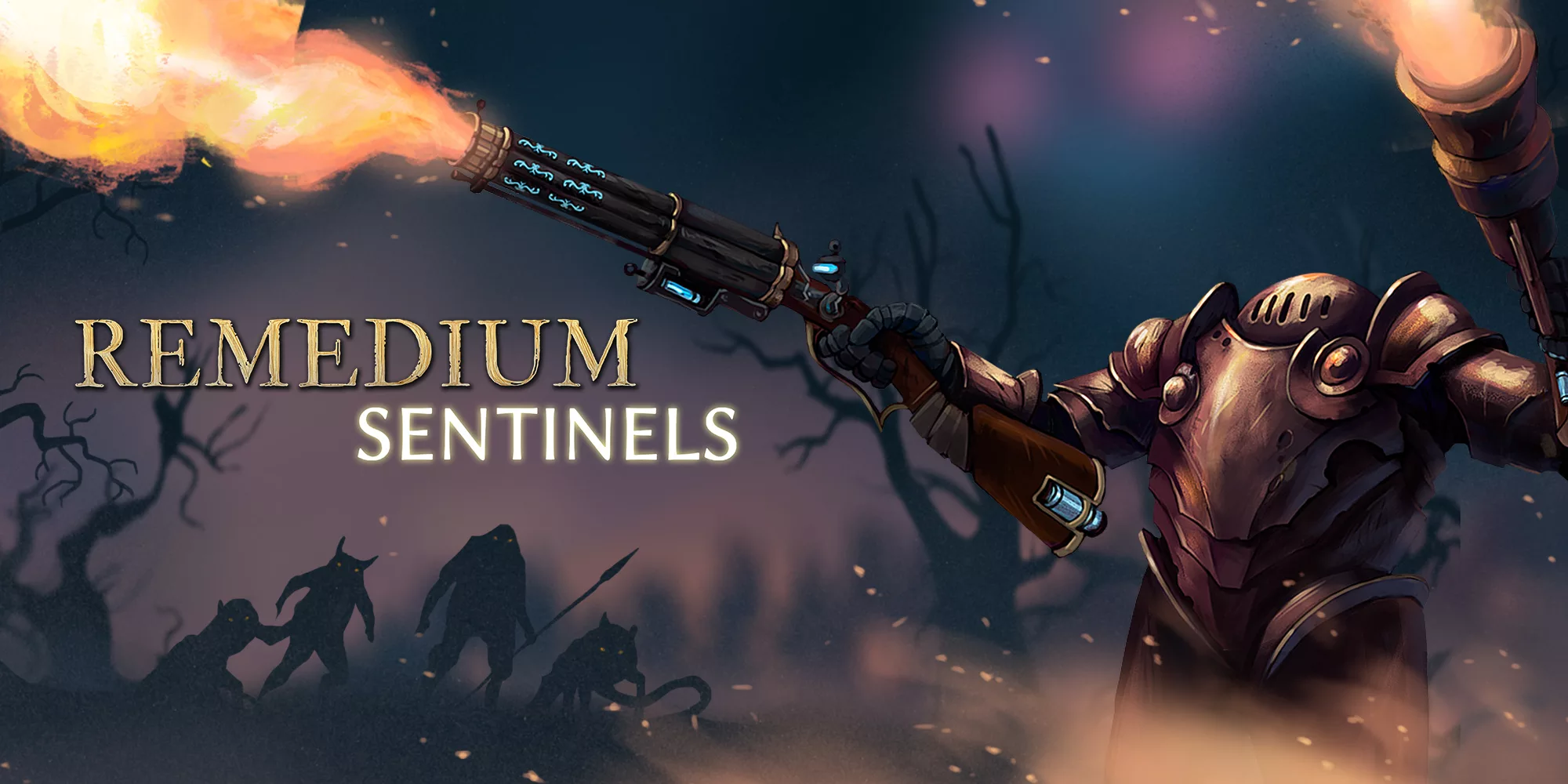I’m not going to lie, when I first started playing Remedium: Sentinels, it didn’t win me over. The mechs you pilot felt clunky and slow. Whether it was the movement and attacks or even levelling up, this game moved at a snail’s pace. But first impressions aren’t everything.
Remedium: Sentinels borrows heavily from Vampire Survivors but has moved to a full 3D isometric view. Mechs and enemies alike sport reasonably well-detailed models, and the levels each have a different theme. Player input is still minimal and leaves you to focus on evading the hordes whilst hoovering up XP drops. This, in turn, lets you level up, making new weapons available, each of which can be upgraded and evolved to more powerful elemental variants.

Weapon variety initially seems on the light side, but the evolutions really open things up. Choosing the right load out and upgrading the right gear is absolutely essential to survival. Most mechs start with close combat weaponry and can be tricked out with machine guns, mortars, rockets, a cool ricochet rifle and many more. Upgrades enhance fire rate and damage, and that’s when all the particle effects really start popping off. The mech can also be beefed up with better health, armour and speed.
There’s zero story here. You literally choose from one of the six maps, a mech, and you’re ready to rock. Enemies start off easy and slowly trickle in for the first minute or two. You’ll kill a bunch of things, unlock a few new weapons, and before you know it, you’re encircled by beasties ranking 10 deep. Then comes the sweet embrace of death, and you do it all again.

Progression is gated entirely by player improvement. If you can last 10 minutes, the next level is unlocked. Do the full 15, and the enemies will disintegrate before you and the area are cleansed. Although these areas are small, they are worth exploring as most of the new mechs are locked in cages and must be liberated before they can be used.
It’s all pretty standard stuff for the passive RPG roguelike. It doesn’t really bring anything new to the genre, but it somehow gripped me. I played a few hours to get to grips with it, found it wasn’t jiving with me, and I left it for a few days. But it was still picking away at me, and I would play the odd game here and there when suddenly it clicked. I found a mech I liked, and I knew which weapons I was looking to buy and upgrade. It all suddenly changed, and I started to really enjoy it. The campaign was long done, but I still needed a few 15-minute runs. There is an element of luck involved as upgrades are randomised but the only thing stopping you from getting everything is time.
Jackhammer, which has lower health but does double melee damage, made the crowds of enemies easier to handle. Anything that got close, got melted in a hit or two. Adding the ricochet rifle and weapons with some decent Area of Effect damage, amping up the attack speed and damage saw me clearing swathes of foes with the click of a finger. It made me feel unstoppable as I obliterated everything that stood before me. With every weapon added and Jackhammer fully upgraded the only thing stopping me was getting overly ambitious. I could keep the swarm at a distance with mortar fire and clear out packs with the ricochet rifle. If anything did get through, the twin boxing gloves of Jackhammer smashed them to smithereens. It was a far cry from my first few attempts at endless mode, most of which saw me downed within a few minutes. It was glorious watching enemies explode into pink mist. Towering mini-bosses crumbling after a few hits. This was when the game really got me hooked and I began to fully understand it.

In fact, despite the melee mechs initially feeling weak, they are definitely the way to go if you want to make decent progress. There are only a few enemies who use ranged attacks but they come from every angle so its easy to become overwhelmed. If Remedium had been a twin stick shooter, there would be more strategy involved but as it it, you’re left entirely to the whims of the systems auto-targetting. This often leads to bigger, beefier enemies pushing through and quickly decimating your health.
It wasn’t all plain sailing, and the game will happily slap you about should you get too brazen, but I found myself getting hyper-focused and learning new things as I progressed. In the end, I had nearly 10 hours of gameplay and had every achievement. And you know what, it was worth it.
This was never meant to be a game in which you lose hundreds of hours to like Vampire Survivors, but the option is there with endless mode. This mode ramps up the difficulty, and the sheer number of enemies on screen is mind-boggling. The most impressive thing is that it all seems to run at a smooth 60fps whilst explosions go off all over the place. The only time I thought I’d killed the game was when I froze everyone and ran into a massive group of enemies. It became a slide show, and menus started to lag, but this is an outlier regarding performance. I will also note I was at 22 minutes and had every weapon unlocked and fully upgraded.
Remedium: Sentinels is a nice side dish to a meaty main course. A quick game here or there in between your next marathon RPG session. The combat feels solid, and the weapons are meaty. There is a challenge to be had here, and the limited weapon set means you’ll easily see all the game has to offer. With a budget price and decent presentation, it’s a fun distraction.
Overall
-
CX Score - 70%70%
Summary
Pros:
- Simple gameplay
- Visuals
- Jackhammer
Cons:
- Slow
- Bad first impression
- Repetitive

